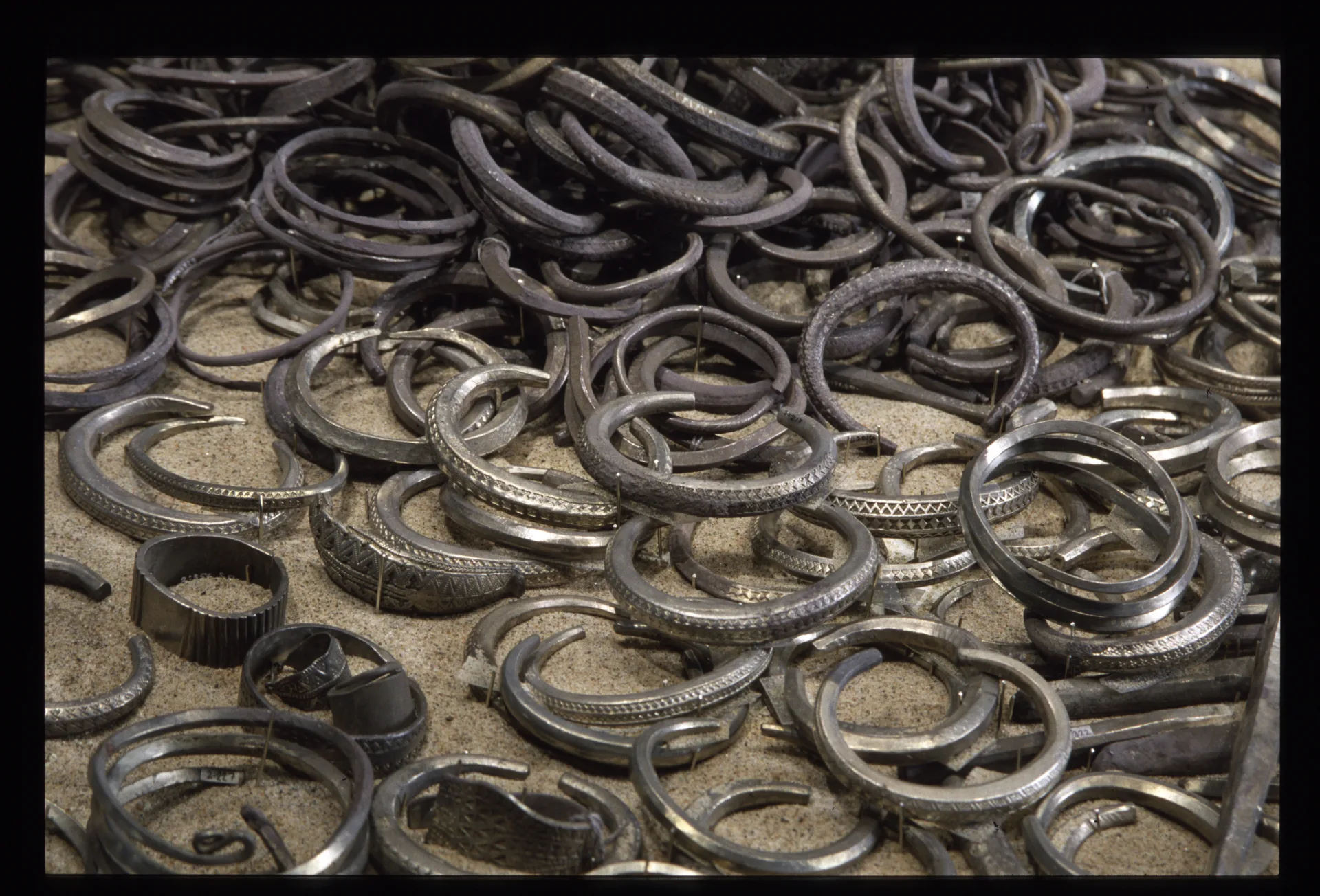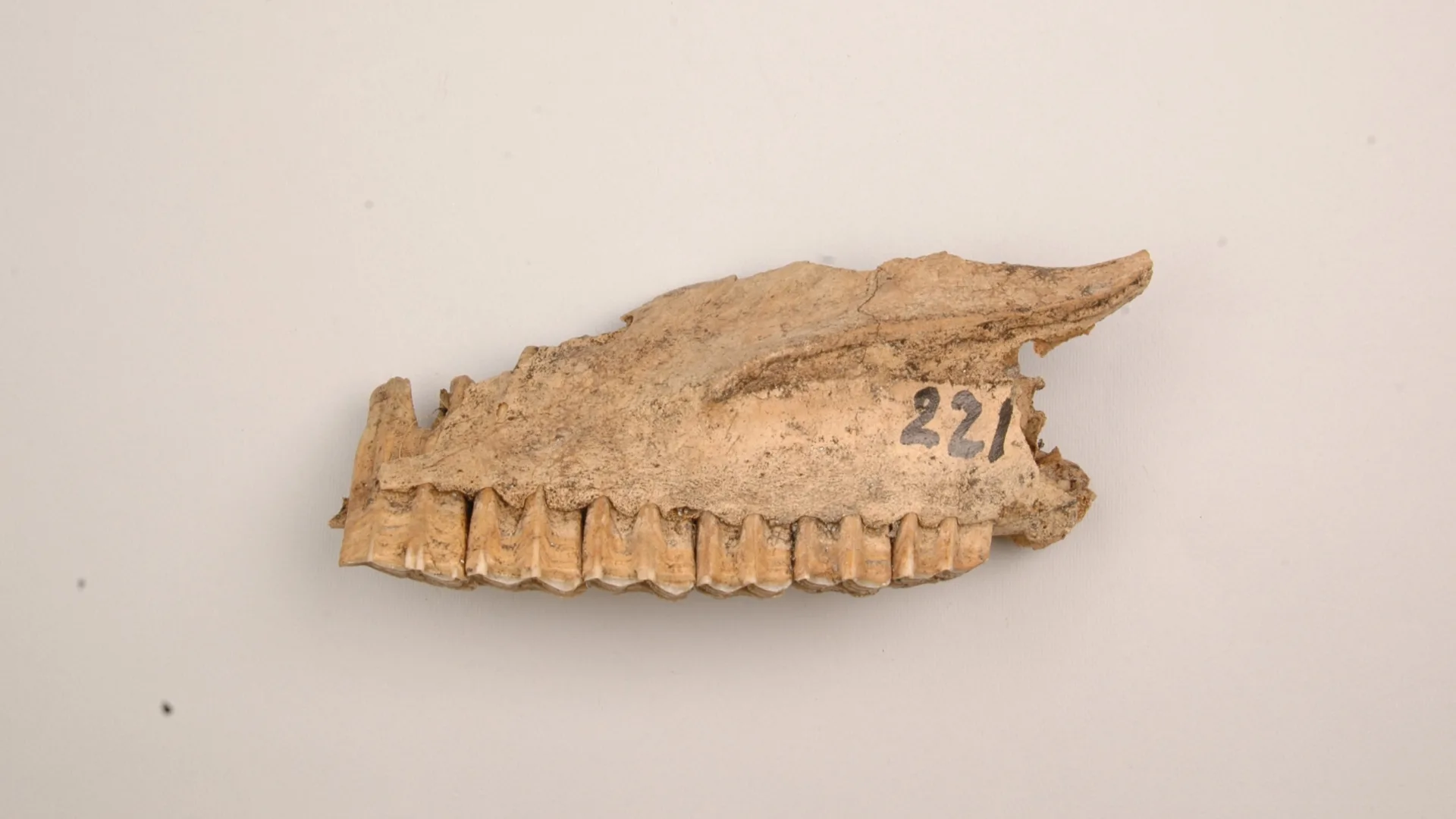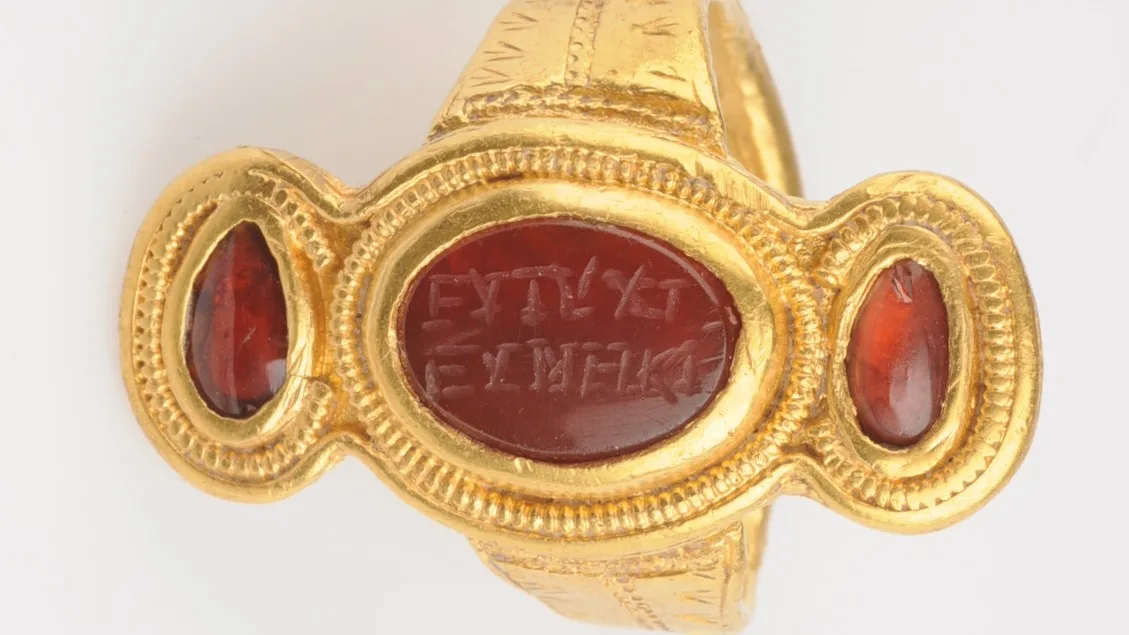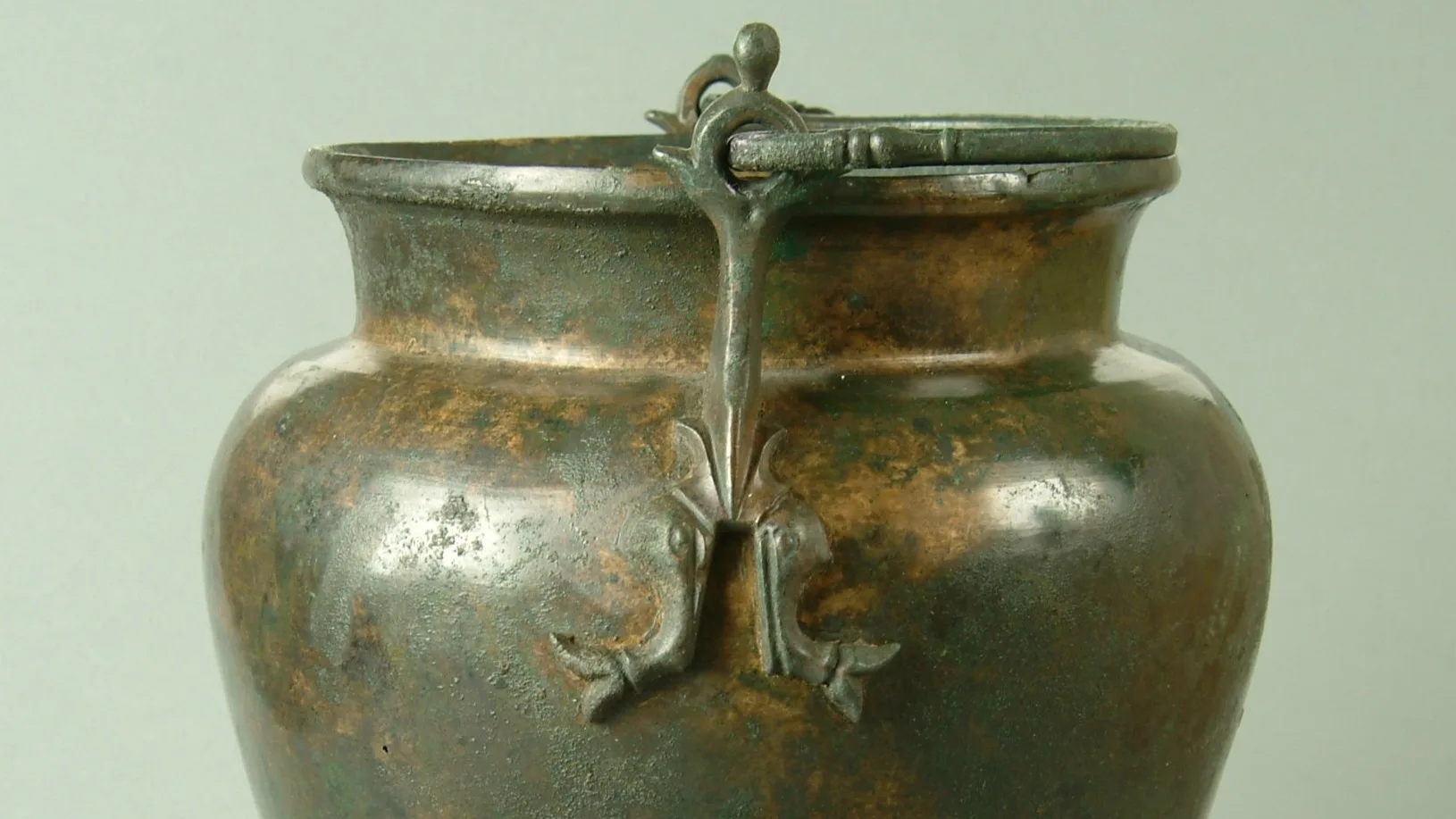The World’s Largest Viking Treasure
Iron Age
500 BC – AD 1100
Viking Age
AD 800 – AD 1100
Middle Ages
AD 1050 – AD 1520
The background to this sensational discovery was that TV4 wanted to film a news segment about the frequent looting of archaeological treasures on Gotland. In autumn 1998, the landowner had contacted authorities after finding coins in a field. Bronze objects had previously been found in the same field.
During the actual filming, only a few pieces of melted bronze were uncovered. But shortly after the TV crew left the site, the first of what would turn out to be three hoards was found—two of silver and one of bronze. The final hoard was discovered during a follow-up investigation a week later.

Over 76 Kilograms of Silver and Bronze
Not only was it remarkable that three hoards were found so close together, they were also astonishingly large.
The first hoard contained over 5,000 coins, 178 arm rings, as well as finger rings, bars, rods, and neck rings, weighing just over 25 kilograms. Most of the coins were found at the bottom of the hoard, inside the remains of a small wooden box.
The second silver hoard included over 9,000 coins and around 340 arm rings, arm bands, and other items such as finger rings, bars, and rods. This hoard weighed around 41 kilograms.
For comparison, the previously largest Viking Age silver hoard in Sweden, the Burge hoard from Lummelunda on Gotland, was found in 1967 and weighed 10.4 kilograms. A typical Viking Age silver hoard from Gotland weighs between 200 and 300 grams.
Coins and Jewellery from Across the Viking World
A large portion of the coins from the Spillings hoard has yet to be fully examined. Most are Arabic dirhams, the most common coin type found in Viking Age hoards in Sweden. The youngest coin identified so far dates to AD 870. A Byzantine coin and four so-called Hedeby coins have also been found.

The rest of the silver appears to have a wide range of origins. Some types of arm bands are very rare on Gotland and are more commonly found in hoards from Norway or the British Isles.
The third hoard is unique in that it consists solely of bronze objects, many of which are broken or partially melted. The forms of the objects are typical of regions that today correspond to Finland, Estonia, Latvia, and Lithuania.
All of this was found in what turned out to be the remains of a spruce wood chest, with an iron lock that was exceptionally well preserved.
An archaeological investigation of the area was carried out the year after the hoards were discovered. It confirmed that the treasures had been buried inside a house dating from the early Viking Age.
Treasures Found—and Threatened
Gotland has long been known for its many Viking Age silver hoards. Most of these treasures have been discovered during agricultural work, especially in the 19th and 20th centuries when previously uncultivated meadows and pastures were brought under the plough.
Later research has shown that many of the find sites are part of ancient monument areas, such as settlements and burial grounds, which have been cultivated over. Even today, agricultural work typically uncovers one hoard per year.
In addition to farming, which increasingly uses larger and heavier machinery that digs deeper into the soil, the greatest threat to these sites comes from illegal metal detector users. At night, ancient monuments are looted and the objects sold abroad.
Changes in soil chemistry due to artificial fertilisers and other environmental factors are also believed to accelerate the corrosion of metals in the ground.



